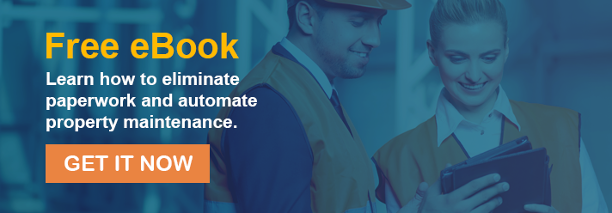If you still use manual methods to manage your maintenance operations, there’s never been a better time to transition to a Computerized Maintenance Management System, otherwise known as a CMMS.
When deciding whether to invest in maintenance management software, the bottom line is ultimately ROI.
While it may seem like a lot of work at first, don’t worry!
With some time and effort, your initial investment will pay off.
The Paper and Excel Method
A lot of companies still make use of paper-based methods to manage and track their maintenance.
Most times, they usually choose this option because it is cheap and often free.
However, a paper-based system cannot be as effective as a digital one, and those are issues to keep in mind.
Some companies use Excel spreadsheets; this solution still comes with several challenges.
First, it isn’t easy to keep the spreadsheet up-to-date and accurate.
Second, users must be experienced to use the software correctly.
Even if you have a CMMS in place, which you believe is working perfectly for your organization, there may be improvements that you don’t even know!
The following are seven capabilities of a CMMS you may not know.
1. Automatically Relate Tasks to Technicians
The need to manage paper-based maintenance methods is a major drawback.
These methods require someone to collect and organize tickets from a multitude of requesters.
This means that there must be either a phone call, paperwork order, fax, or conversation taking place in the field, which means you must manually assign work orders and check on their statuses.
Not only will this method of record keeping waste your time, but it also leads to missed or forgotten maintenance requests and other information.
A CMMS streamlines how you manage requests by eliminating the need to manage them continuously.
Users can submit tickets and store them in the system, which will send you a notification that they were submitted and allow you to check them, reply to them, and manage them at a convenient time.
Upon your request, the software can automatically assign work orders, and if a request is submitted, notifications are sent out to the assigned technician.
2. Real-Time Data with Actionable Insight
Have you ever wanted to pull up equipment downtime, costs associated with each equipment item, or total labor hours?
Then you’ll know that it’s not easy to accomplish with a manual management system.
In fact, it’s nearly impossible to execute with Excel or other paper-based methods.
Even if you can produce reports, they will need to be continuously updated when new data enters the system.
On the other hand, CMMS reports and dashboards combine to produce information automatically in real-time. With this information, you can easily reference them at your convenience or pull the information directly from the system and convert it into a downloadable format.
These reports can help you make data-driven decisions about your team, tools, equipment, and other facility management needs.
Additionally, you can access these files and reports while working in the field, making equipment and asset checks a lot easier.
3. Organize and Maintain All Past, Present, And Future Work Orders
A paper system can be useful for some things such as organizing your calls and work to do.
However, paper systems are very inefficient because they require the paper to be filed or thrown away after requests have been completed.
You may also end up having multiple tickets for the same case or different cases filed together.
When looking for a ticket in the future, you may not find it because there are too many other tickets covering it up; even if you are saving them somewhere, such as a spreadsheet on your computer. They are still prone to errors or accidental deletion.
Close to 90% of all spreadsheets have errors, and a collection of hundreds of work orders is bound to have at least one mistake hidden within the document.
As long as the CMMS is used correctly and maintained well, fewer errors will be present than with a paperwork order or a spreadsheet.
All requests are logged into the system and can be managed and organized with robust filter options.
You can reference past requests, manage current work, and look ahead to plan for future needs right in the system.
4. Get Work Orders Anytime, Anywhere, And On Any Device
Using maintenance software that cannot be accessed, while on the go, is more dangerous than not having any inventory management system.
This lack of mobility means that your technicians carry out back-and-forth trips or are on constant phone calls with their supervisors explaining what needs to get done.
Sometimes these calls or radio calls can be missed in translation.
When it comes to managing a remote workforce, task management can be one of the most important aspects.
If you’re not using a system that makes it easy for techs to document and communicate what needs to get done, you’ll lose time, money, and productivity.
A CMMS, like the one that 24/7 Software offers, is available on any mobile device or tablet.
This makes it easy to track requests and access information anytime and anywhere.
You can also use it to access information about your assets and make sure your equipment is properly maintained.
5. Provide Detailed Information About a Request
Because you are managing requests from different users simultaneously, there is probably important information that is lost in translation.
Letting the user enter their request ensures that they provide all the necessary details.
A CMMS can help you streamline your ticket management system.
You can require users to input certain information (for example, air temperature if the request is an HVAC issue) or even attach pictures.
This ensures that your team receives all necessary details to move forward and work efficiently on the ticket.
In some cases, technicians can work on a ticket without ever contacting the requester.
The technician may realize they need more information pertaining to the request and reply to the requester with their questions, eliminating the need for phone calls which keeps things moving along.
6. Analyze and formulate Reports Right from The System
Generating reports from paperwork orders is almost impossible, although, with excel, there’s a little bit of hope, it is not always easy.
Filtering can be tasking and writing formulas to generate information you need is honestly not an effective use of time.
A CMMS allows you to create custom reports for different specific needs, and once these reports have been created, there’ll be no need to create them ever again.
Plus, you can reference them anytime. You can use the reports generated by these systems to justify additional staff or capital improvements with upper management.
7. Communicate Effectively in One System
In a paper-based system, typically only one person oversees managing all requests.
This limits the amount of communication between the requesting user and the technician working on the request.
Communicating in a CMMS is different from communicating in the field.
Users can attach pictures and videos to their requests and provide details about what they need.
Technicians can also easily respond with updates or questions as the circumstance may require.
The requesting user will be notified that the task has been completed in real-time.
All of these interactions will be archived so that you can refer back to them whenever you need to.
Over to You
If you’re not using a CMMS, your organization could be losing time and money.
A CMMS helps improve the maintenance and operations capacity of your organization daily, ultimately saving you time and future headaches. Consider a CMMS today.




